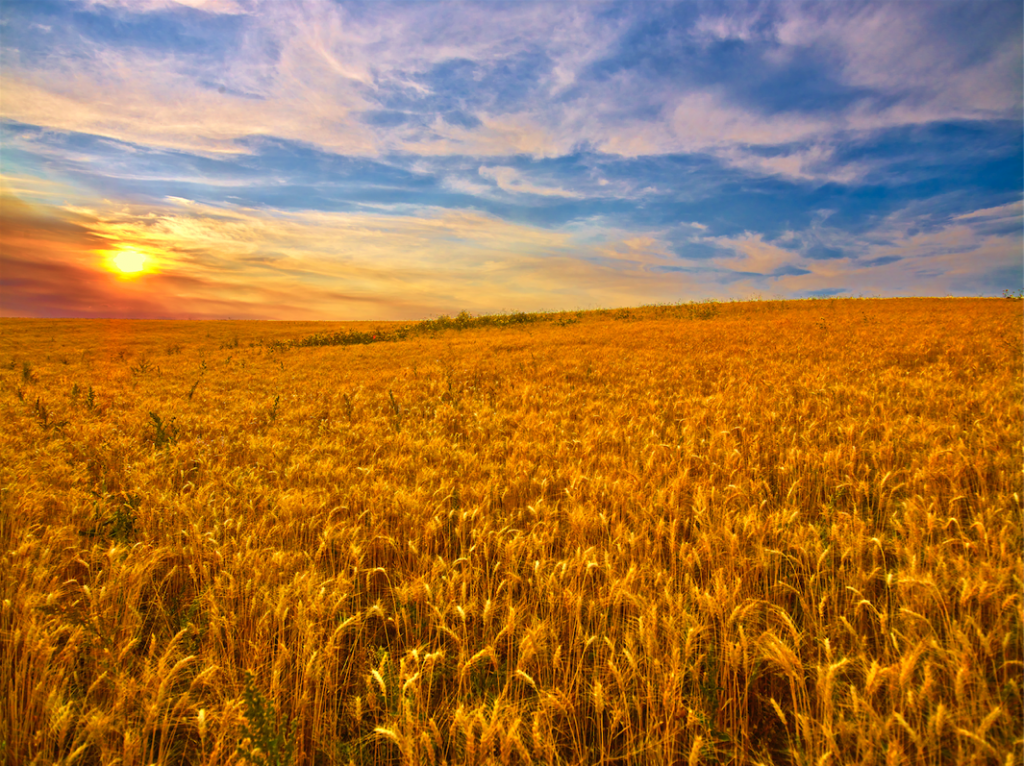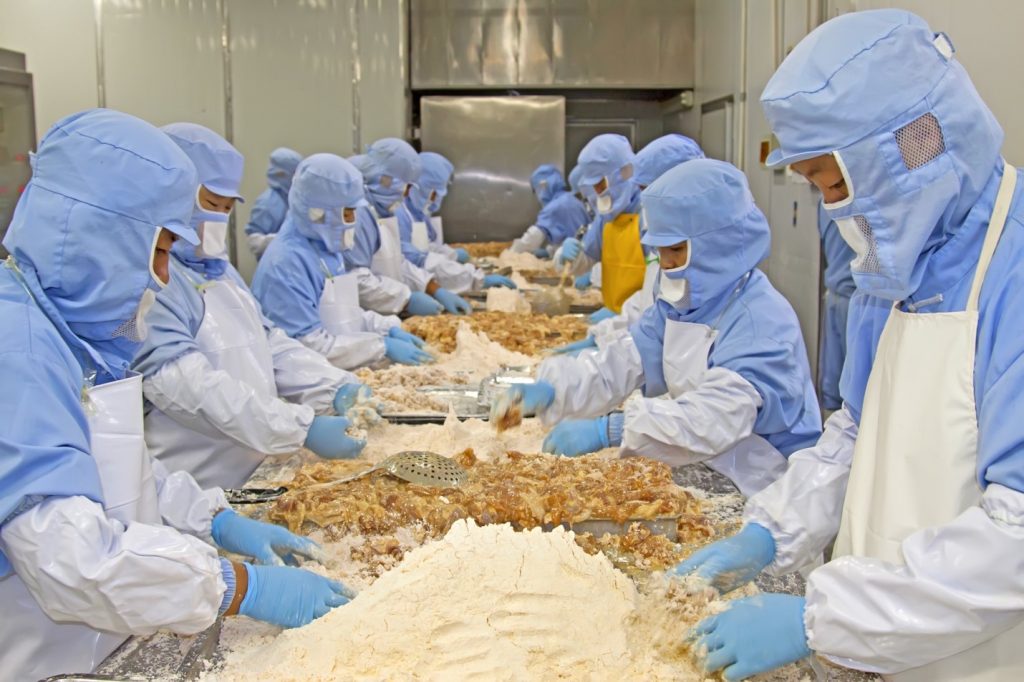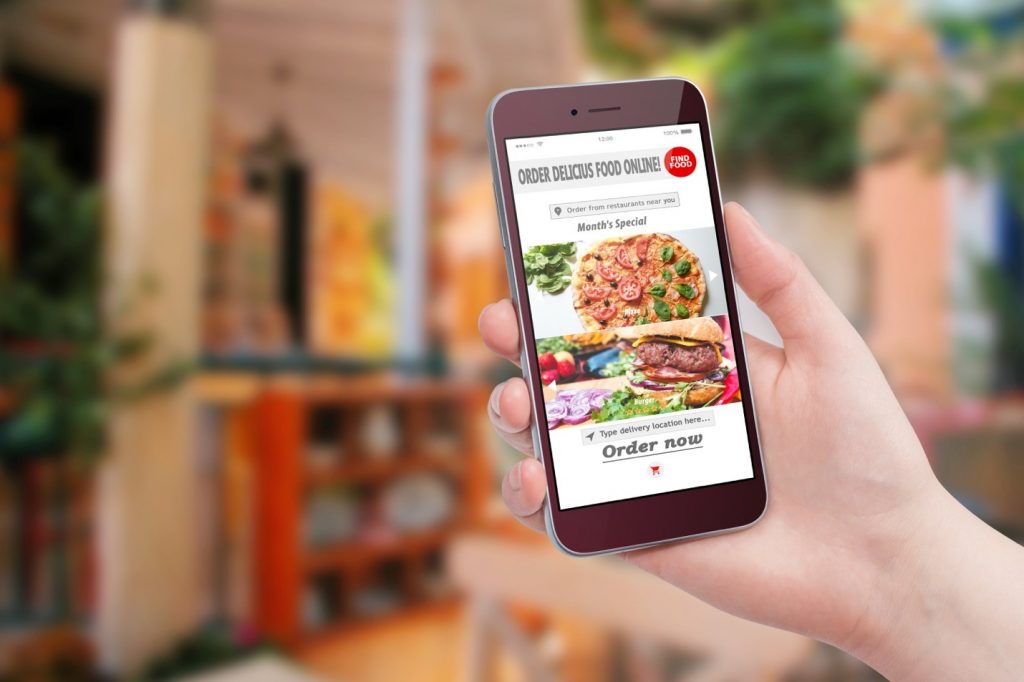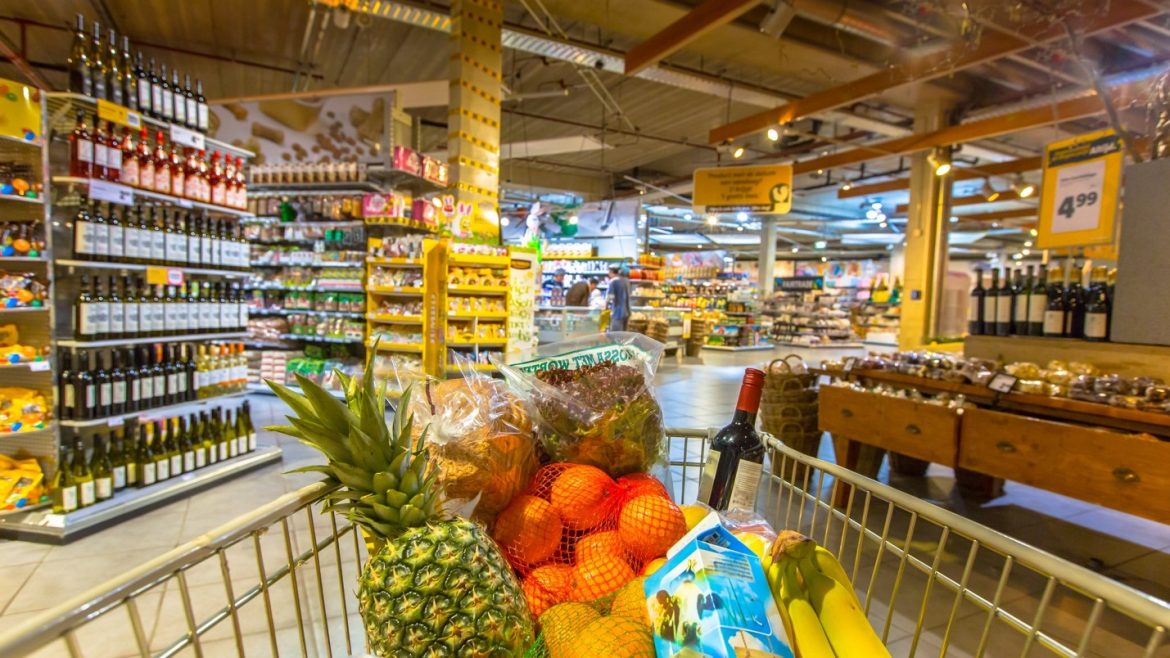The food retail and services sector weighs in with a combined sales of $5.75 trillion. In modern America, food has undergone significant changes in the past 50 years, some good, some bad and others that seem to have gone in a complete circle!
As a nation, we are obsessed with food, but this does not seem to correlate with good health. The biggest change involving food in the last 50 years just might be the fact that, for the first time in all of recorded human history, people have too much food. Americans are literally eating themselves to death. Nearly four in 10 Americans—93.3 million people—are now obese. Even as the food industry urged us all to “go skinny” branching out into the obesity remedy business Heinz bought Weight Watchers in 1978, SlimFast was sold to the company that owns Ben & Jerry’s and Wall’s sausages in 2000, and Jenny Craig was gobbled up by Nestle, the chocolate and ice cream giant that was the most profitable company in the world in 2011. Yet, none of this has slowed the obesity epidemic because America still loves the processed foods that just make us fatter!
Obesity is a condition directly tied to cancer, heart disease, diabetes, stroke, and other leading causes of preventable premature death. Food has become so cheap and readily available that America’s overfed, under-exercised bodies—not to mention the country’s health care system—are at risk of collapsing under the enormous weight of it all.
And, one of the saddest results of this overabundance of food to take place over the last 50 years is the sheer volume of waste that has become the norm. America’s throwaway culture produces 35 million tons of food waste every year—upwards of 40% of all our food. The average American tosses 300 pounds of food, or $2,200 per household, every year, while farmers are struggling to make a living.
Wherever we turn we are bombarded by food, in modern America chefs have become celebrities and they are churning out cooking shows and cookbooks with sales that grow over 20% year on year… and our appetite for them knows no bounds. Personality, competition, and lifestyle food shows continue drawing huge viewership on television and online, exemplified by the likes of YouTube channels like Tastemade and Food Network stalwarts like “Chopped” and “Barefoot Contessa.” Food-related documentaries like the acclaimed “Salt Fat Acid Heat” continue to flood Netflix and other streaming services. Once upon a time, naysayers questioned whether the Food Network could survive, but now Hollywood can’t get enough culinary programming. The same is true with food and social media. Instagram could spin-off an entirely new social network just for the mountain of food pictures its user’s post. #Food is the 25th most-used hashtag with over 252 million posts. Celebrity chefs who take Instagram seriously command millions of followers.
And what has all this focus on food done to the culinary and nutrition landscape of today? It has made it virtually unrecognizable from the way we grew, cooked and bought food 50 years ago! Now I am old enough to remember what my family was eating in 1969, but as I was living in England it’s not a direct comparison to America. We lived in Kent, a rural farming area and so we ate seasonally and locally when I was growing up. That has very much stayed with me even now, living in NYC with everything available any time of year, I really appreciate the time I spend in the Catskill mountains buying food from local farmers markets – eating seasonally and organically.
So, some of the key observation from the last 50 years of food in America.
FROM THE FARM:

America Goes Organic
The last 50 years (and the last two decades in particular) have come with a meteoric rise in the organic trend. Organic food sales more than doubled from less than $20 billion in 2006 to more than $40 billion in 2015. Now, more than 6% of the foods at local markets are organic. At the current growth rate of 10% a year, we have the potential to reach 100% in about 30 years, or less. As Americans have become more health-conscious and concerned with pollution and other environmental degradation, organic and regenerative agriculture only gains more traction.
The farmers market makes a comeback
Most 19th-century American cities and large towns sponsored gatherings where local growers and makers could sell their fresh produce, meat, eggs, and other edibles to hungry residents. The rise of supermarket culture in the 20th century rendered the traditional farmer’s market obsolete—or so it seemed. By the 1990s, Americans—more health-conscious and aware of what they were feeding their families—longed for a return to simple, fresh, local ingredients. By 1999, there were 2,600 farmers markets in the United States, 50% more than just five years previous; today, there are nearly 9,000.
The farm-to-table movement takes root
The loosely defined farm-to-table movement, which focuses on sustainability and eating local, began in earnest in 1971 when a champion of those concepts named Alice Waters opened the iconic Chez Panisse in Berkeley, Calif. The concept began gaining traction in the 1980s and by the year 2000, the movement was so entrenched—as it remains today—that some schools even began sourcing student meals locally.
The American farm goes industrial
The single biggest change in food over the last 50 years is the conversion of America’s small- and medium-sized farms into massive industrial factories designed to raise, contain, and slaughter animals as efficiently and inexpensively as possible. In the 1970s, hog, beef, and dairy farmers joined chicken farmers, which have been mass-producing poultry and eggs since the 1920s, in centralizing their operations and developing enormous, corporatist operations focused almost solely on production and profit. Today, roughly 94% of all animals raised for human consumption spend their lives on massive factory farms, a point which has drawn concern from animal activists and climate scientists.
Cage-free catches on
Sustained public outcry has forced roughly 200 major companies, including every major fast food and supermarket chain, to use only cage-free eggs by 2025. Together, those two industries account for half of the 7 billion eggs produced every month in the United States.
Ag-gag’ rules sweep states
Over the past 50 years, the agriculture industry has lobbied for so-called “ag-gag” regulations, which make it a crime to film or photograph conditions on factory farms without the owner’s consent. The laws are a response to undercover investigations from animal activists, the kind that has produced disturbing footage of animal abuse. Multiple lawsuits have questioned the constitutionality of these regulations, citing free speech; in January 2019, a judge in Iowa overturned an ag-gag law on the grounds that it violated the First Amendment.
Genetically engineered crops grow
Humans have been artificially selecting and manipulating crop strains for thousands of years, but everything changed in 1973 when Herbert Boyer and Stanley Cohen developed genetic engineering (GE). In 1980, the Supreme Court ruled that the patenting of GE products was constitutional and in 1992, Flavr Savr tomatoes became the first GE food crop to win USDA approval. In 1995, the USDA approved the world’s first insecticide-producing crop and a year later, herbicide-resistant crops were developed.
Corporations take control of seeds
By the late 2000s, the approval of GE patents led to the consolidation of American agriculture into the hands of a few enormous corporations, most notably and most infamously, Monsanto, which controlled virtually all the American soy and corn seed market by 2009
THE GREAT “GRAIN CONUNDRUM”

Grains grow
Over the last half-century, Americans have gobbled up far more grain than ever before. Between 1970 and 2010, average grain consumption in the U.S. jumped by nearly 50% from a little over 400 calories per day to just under 600 calories per day.
Ancient grains make a modern comeback
For much of the last 50 years, most Americans would have lived their whole lives without ever hearing about, much less trying, so-called ancient grains like quinoa, farro, amaranth, Kamut and spelt. Thanks to a widespread rediscovery of these high-protein, high-fiber, vitamin-rich grains, lower-quality “modern” grains are being forced to make room for a resurgence in grains that once sustained societies like the Aztecs. In just one year ending in 2018, shipments from distributors to U.S. foodservice outlets increased by double-digit percentage points.
And on the other side of the coin…
Americans go gluten-free
The link between gluten and the immune disorder celiac disease was discovered in the 1940s, and by the 1970s, scientists discovered the gene responsible for the disorder. Although gluten is not harmful to non-celiac sufferers—99% of the population—the elastic, wheat-derived substance that gives bread its shape took a bit of a hit starting in the 2000s. By 2013, the gluten-free food and beverage industry grew to $10.5 billion.
Carbs get criminalized
Mentioned heavily in ancient texts like the Bible and even in Egyptian hieroglyphics, bread has been a staple of human food consumption for at least as long as humans have been writing things down. The end of the 20th century, however, witnessed vilification of carbohydrates and the foods that contain them, with things like potatoes, rice, grain, and bread suffering hits to their long-standing reputations. The rise of the low-carb, high-protein Atkins Diet encouraged people to eat things like bun-less burgers, and while the Atkins Diet faded, the ketogenic diet that dominates today’s Google searches enforces a similar severity toward carbs.
And protein keeps on growing…
Protein becomes the golden child
Unlike fat, sugar, and carbs, one building block of food that has not gone in and out of vogue over the last 50 years is protein, a perennial favorite of scientific and medical studies over the decades. Weightlifters have long gobbled superhuman portions of chicken and tuna while supplementing with whey protein shakes. The rise of the supplement industry and stores like GNC, however, brought the protein obsession to the masses.
FOOD OR FOE

Food becomes ‘food’
The history of processed food technically dates back 1.8 million years, when early humans first began processing their meat by cooking it with fire. The end of World War II and the baby boom that followed it, however, led to the rise of a different kind of processing, when refined sugars, additives, dyes, preservatives, and a vocabulary of unpronounceable ingredients became the foundation of the American diet. Today, over 60% of what we eat consists of processed foods.
Sugar consumption spikes
The sugar industry began funding research in the 1960s to minimize the health risks of sugar and emphasize the dangers of fat. The marketing campaign apparently worked, as sugar consumption exploded from a couple of pounds per person per year to 123 pounds per person in 1970 and to 152 pounds today—or about 42.5 teaspoons per day, compared to the recommended 13.3 teaspoons.
High-fructose corn syrup spreads
First developed in 1957, high-fructose corn syrup began finding its way into the American diet in the 1970s. By 1984, the concentrated, corn starch-derived goop was the main sweetener in virtually every soda and sweet-tasting processed food. In the 2000s, however, the tide began to turn against high-fructose corn syrup, so much so that there was a campaign to rename it “corn sugar.”
Portion sizes and calorie counts grow
The average muffin in the last 20 years grew from 1.5 ounces and 210 calories to 4 ounces and 500 calories, while the average bagel expanded from three inches and 140 calories to six inches and 350 calories. From super-sized fast-food options and all-you-can-eat buffets to so-called family sized snacks and gargantuan sodas, portion sizes have gotten consistently more enormous, right along with America’s average waistline, over the last 50 years. The average daily caloric intake jumped by 20% from about 2,200 in 1970 to about 2,600 today.
Oils and fats expand
Like grain, products like butter, cream, and oil also account for a big chunk of the growth of America’s portions over the last half-century. Consumption of oil and fats grew from about 350 calories per day in 1970 to nearly 600 in 2010.
MILKING IT

Milk consumption dwindles
Milk was not part of the mainstream diet until after World War I, when it was propagandized as a kind of early superfood—a reputation that it would enjoy for decades. Milk, however, has fallen out of favor over the last 50 years. In 1975, the average American drank 130 liters of milk a year, compared to just 66 liters in 2017. Domestic sales have dropped by 15% since 2012 alone.
Plant-based milks emerge
Modern Americans are now more aware of the treatment of animals by the dairy industry and the industry’s impact on the environment—an awakening that coincided with the modern health food revolution. The alternative, plant-based milk industry has emerged to fill the void, and once-niche products like soy milk and almond milk are now readily available at the average supermarket. In fact, nearly half of all shoppers now leave the grocery store with plant-based milk as part of what has become a $16 billion industry.
TRENDS THAT MADE IT MAINSTREAM

Americans drink their breakfast
Although there’s no way to know exactly when the first smoothie was made, pulverizing and pureeing food has been around for hundreds of years. The health-food movement of the 1960s, however, launched what has become a 50-year bonanza of smoothie mania. A lactose-intolerant teenager who wanted to enjoy milkshakes with his friends went on to open Smoothie King in 1973, a franchise that today boasts over 800 stores. By 2014, Dole Packaged Foods, the largest frozen fruit company in the world, estimated that 60% of the frozen fruit it sold was blended into smoothies.
Diet sodas arrive
In the 1950s and early 1960s, soda companies began marketing low-calorie, low-sugar drinks—not to dieters worried about their figures, but to diabetics. In 1963, however, The Coca-Cola Company unveiled its own diet soda, Tab, which quickly gained wide popularity among the health-conscious. Pepsi followed suit with what would become Diet Pepsi, Diet 7-Up hit the market in 1979, and Diet Coke began appearing on store shelves in 1982.
Energy drinks explode
Although the first drink marketed specifically as an energy booster debuted in Japan in 1962, it was the invention of Red Bull in 1987 that fueled the rise of one of the biggest trends in beverage history: the energy drink craze. The sugar, caffeine, and taurine-based drink came to America 10 years later in 1997, and soon after, the tall, skinny, silver cans were everywhere. The early 2000s brought Monster Beverage, 5-Hour Energy, and the controversial Four Loko to the market, and today, over 20 years later, the energy drink industry is approaching the $20 billion mark.
The produce section evolves
The produce section was long relegated to the perimeter of the American grocery store; but as America’s hunger for healthy, fresh, and exotic fruits and vegetables has grown, the produce section has expanded dramatically and sometimes moved to more prime real estate. Over the last two decades, shoppers have seen an expansion of not just organic and exotic offerings, but also an increase in so-called value-added items, like pre-peeled or pre-cut fruit and veggies. In some cases, as with the Kroger chain, grocery stores are for the first time moving their produce section to the middle of the supermarket.
Veganism takes off
Fifty years ago, most Americans had probably never heard the word “vegan.” A combined concern for animal welfare and for the environment increased awareness about the sources of America’s food chain, and emerging information about potential health benefits of a plant-based diet changed all that. Over the last two decades, veganism has exploded from a small, peculiar, and often-mocked niche into a chic, popular, and celebrity-packed subculture that is putting the substitute meat and dairy industry on course to becoming a $40 billion venture by 2020.
Fish farms scale up
Although the practice of raising fish in contained areas has ancient roots, the game changed forever in the 1950s with the invention of artificial granulated fish food, which made fish farming practical on an enormous scale. By the 1970s, aquaculture expanded to marine fish thanks to the emergence of cheap, light, and durable materials like fiberglass and PVC. By 2013, farmed fish overtook the rapidly dwindling wild-caught stocks and by 2030, two-thirds of all fish consumed are projected to come from fish farms.
Consumer information improves
Until the late 1960s, almost no food sold in America contained a list of ingredients or other nutritional information. It was first suggested in 1969 that the FDA start requiring food companies to include this crucial information. The Nutrition Labeling and Education Act of 1990 finally mandated that virtually all food sold in the United States provide clear labeling of ingredients, serving sizes, and daily intake recommendations.
Meal kits make everyone a chef
The culinarily challenged got a huge boost in kitchen skills starting in 2007 when the first meal kit delivery service emerged in Europe. The concept soon spread to America, where cooking amateurs flocked to the concept of preparing meals that would otherwise be out of their league thanks to delivery kits with pre-measured, pre-prepped, high-quality ingredients complete with tutorials that even novices would have to try to mess up. Companies like Blue Apron and Hello Fresh rose quickly but were soon met with stiff competition from grocery chains and giants like Amazon that longed to muscle in on an industry that is expected to reach $66 billion by 2021.
The grocery store comes to you
The rise of online retail in the 2000s changed the way Americans shop and forced traditional stores to evolve or die. Now, a race between the world’s biggest companies to corner the budding grocery-delivery market is poised to do the same thing for food shopping and grocery stores. Walmart, Amazon, Target, and many other big retail names have gotten in on the action, each hoping to emerge as the leader of the industry, which is expected to capture 20% of the grocery market by 2025 for $100 billion in sales.
Food porn takes over Instagram
The human brain evolved to find food, and social media influencers have capitalized on the brain’s primal reward system with a bizarre and intensely popular genre of media known as food porn. From celebrities to regular people, businesses to civic groups, social media users flood their accounts with a nearly perpetual stream of food-related imagery that has been proven to promote unhealthy eating, make people hungry, and disproportionately tempt people who are already overweight.
Consumer information improves
Until the late 1960s, almost no food sold in America contained a list of ingredients or other nutritional information. It was first suggested in 1969 that the FDA start requiring food companies to include this crucial information. The Nutrition Labeling and Education Act of 1990 finally mandated that virtually all food sold in the United States provide clear labeling of ingredients, serving sizes, and daily intake recommendations
Temptation is everywhere
By the 1960s, roughly 60% of American households had televisions. That tipping point signaled the rise of a 50-year onslaught of advertising, often directed at children, courtesy of the food and beverage industry. Food has become among the most heavily marketed products on Earth, and ad spending by the grocery store industry alone now tops $190 billion a year.
THE FUTURE
Maybe our food in the future is recognizable as food, purchased in bulk and stored in reusable and sustainable bags and containers.

Our thanks to TheStacker.com where the majority of this information came from.
 Food
Food Farmers
Farmers Sustainable Living
Sustainable Living Living Planet
Living Planet News
News